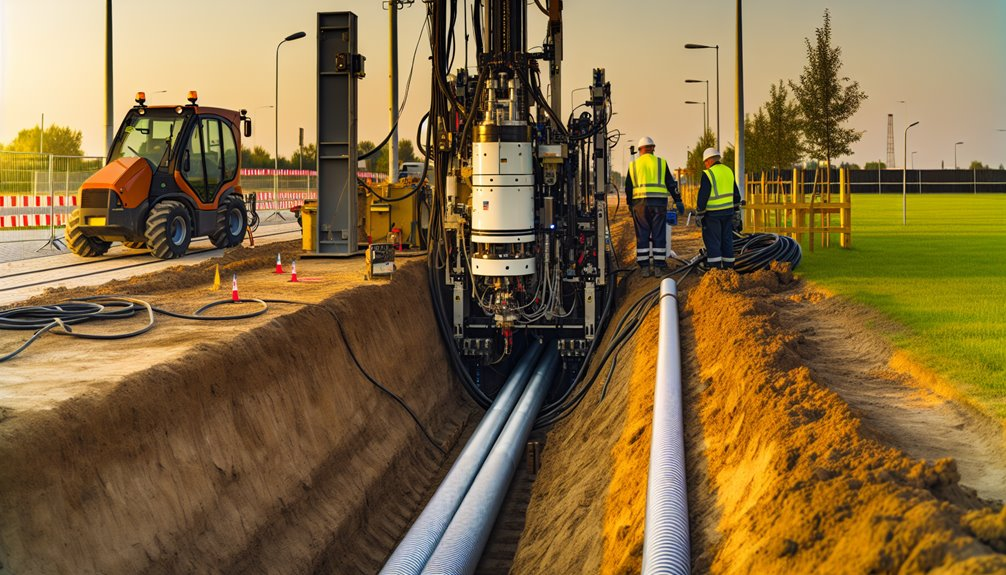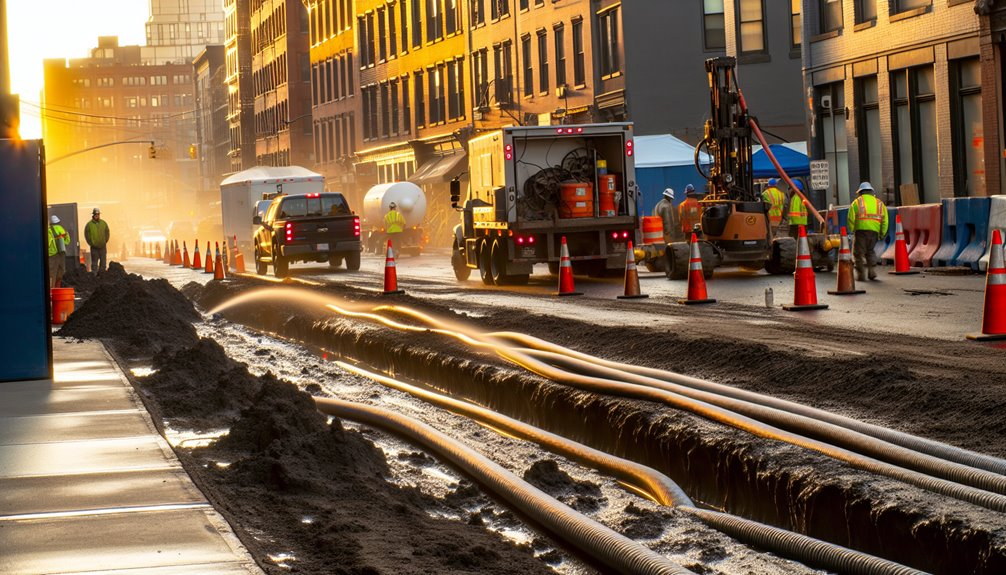You’re weighing missile boring for short, straight utility runs where open cut isn’t viable. Pneumatic piercing tools convert compressed air into percussive thrust, steering an ogive head through well‑graded sands and silty soils to place 1–4 in conduit over 10–60 ft with minimal surface disruption. With fast setup, tight footprints, and high shots‑per‑day, it’s efficient—if you control pressure, lubricate correctly, and locate accurately. The real gains—and pitfalls—show up in planning, soils, and safety.
How Pneumatic Piercing Tools Work
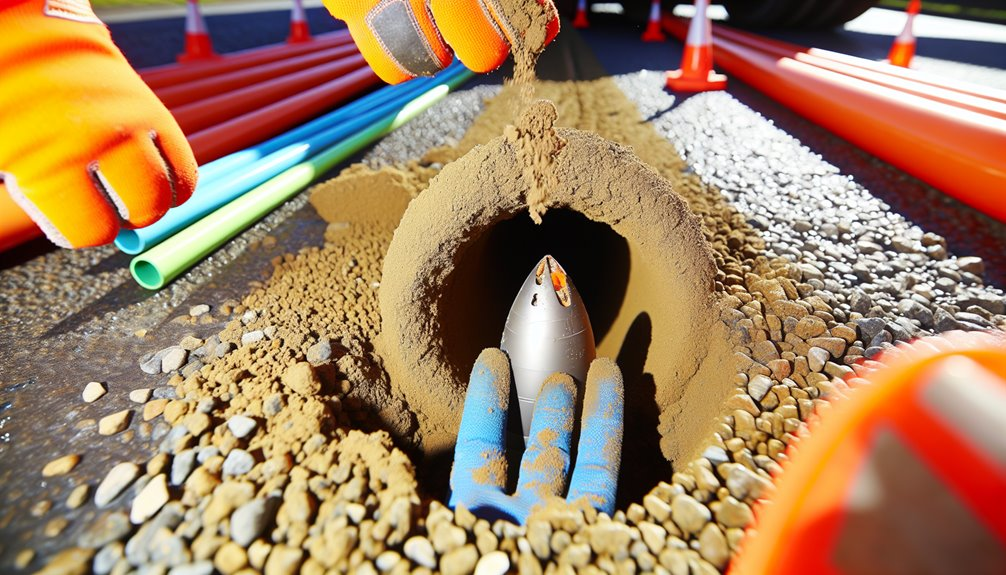
Kick off with the core: a pneumatic piercing tool (PPT), or “missile,” converts compressed air into reciprocating percussive energy that drives a hardened steel head through soil along a near-straight bore path.
You meter air via a lubricated control line; the valve cycles a striker against an anvil, essentially a compact class of pneumatic hammers.
The impact frequency (8–12 Hz) and stroke length translate to forward thrust, while the ogive nose self-steers by soil reaction.
You fine-tune line pressure to match grain size and cohesion, preventing overblow or stall.
Maintain head lubrication to cut friction and dissipate heat.
Verify alignment with a launch cradle, then clock the tool to correct drift.
You’ll track production by blows-per-foot and return temperature to confirm efficient energy transfer.
Ideal Applications and Project Scenarios
With the mechanics and control of a pneumatic piercing tool established, you can match the “missile” to jobs where short, straight bores deliver the best cost-performance.
You’ll deploy it for residential service laterals, curb-to-meter replacements, and fiber drops where trenching disrupts landscapes or hardscape.
In tight spaces—setbacks, congested rights-of-way, or under sidewalks—you’ll value rapid setup, minimal footprint, and predictable line/grade over short distances.
Typical bores span 10–60 feet with 1–4 inch OD conduits, meeting common gas, water, power, and telecom specs while keeping restoration costs low.
Crews align on productivity metrics: shots per day, hit-rate to pothole, and reinstatement time.
When the alignment is straight and the corridor is known, missile boring keeps you on schedule and in budget.
- Driveway and sidewalk crossings
- Road shoulder-to-easement tie-ins
- Meter set relocations and service renewals
Soil Conditions and Accuracy Considerations
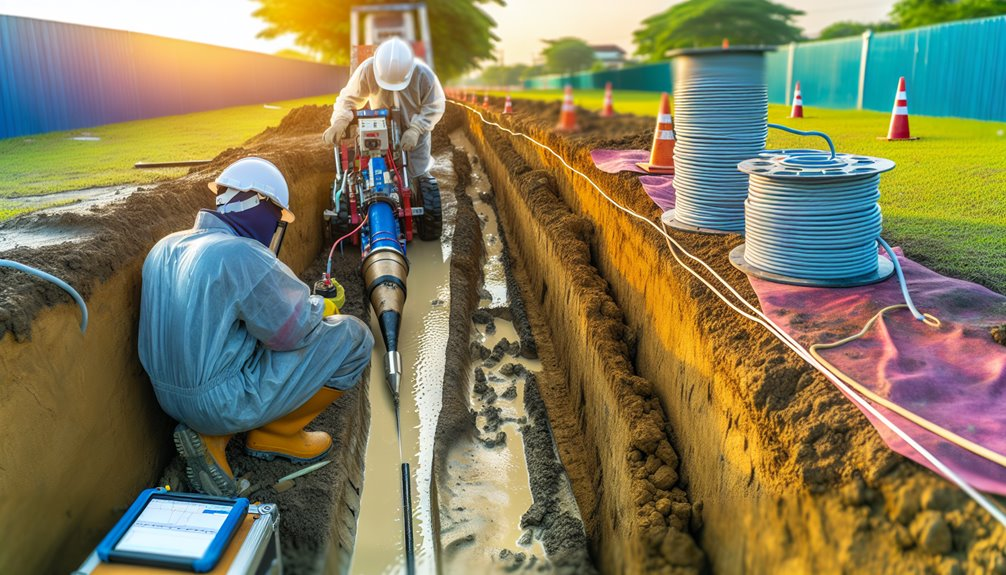
Although pneumatic piercing tools are simple, subsurface conditions dictate whether you’ll hold line and depth or drift and stall. You’ll see the best accuracy in well-graded sands and silty soils with 8–15% fines, where the nose packs, friction stabilizes, and rebound is predictable. In cobbles or gravels, point deflection and ricochet induce yaw; expect higher divergence. Saturated clays amplify groundwater influence, reducing friction and increasing blow-by, which shortens strokes and skews trajectory. Desiccated clays can oversteer the head and cause heave. Organic layers and root obstruction deflect the tool, creating vertical roll and side wander. Cold, dense soils raise operating PSI requirements. Manage expectations: tighter tolerances come from consistent geology, moderate moisture, and minimal inclusions; heterogeneity increases cumulative lateral error.
Planning, Locating, and Safety Best Practices
Before you stage a shot, build a defensible plan: reconcile as-builts with recent utility locates, commission a full 811 ticket, and supplement with EM/FM induction sweeps and GPR where congestion or unknowns exist.
Validate route mapping with survey control, tie elevations to benchmarks, and flag exclusion zones. Lock down permit requirements early—traffic control, noise windows, and restoration specs—so you don’t stall the crew.
Coordinate with facility owners and the site GC; utility coordination and stakeholder communication reduce strikes and downtime. Establish a stop-work threshold (signal loss, variance >6 in) and a real-time check-in cadence. Document all findings for traceability.
- Verify depth buffers and separation from critical plant
- Pre-plan strike response and isolation procedures
- Brief the team: hazards, LOTO, access/egress, emergency contacts
Step-by-Step Process for a Successful Shot
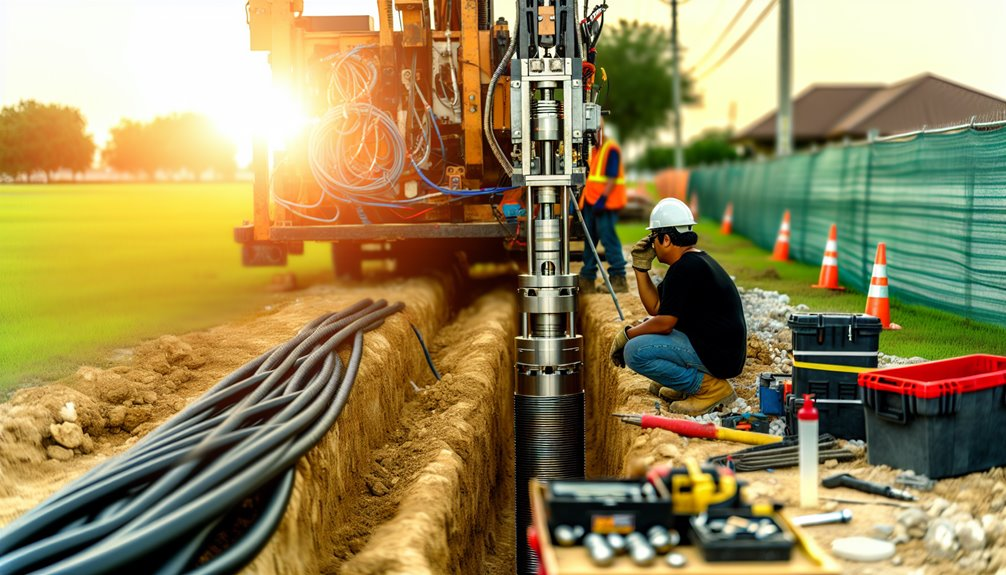
Start by staging the rig and aligning the bore path to survey control, then run a pre-shot checklist: verify transmitter calibration, drill head/bit selection, fluid mix (viscosity/gel strength), and tooling compatibility with soil class. Confirm environmental permits, one-calls, and locate marks. Validate operator training credentials and tailgate the plan so everyone’s synchronized.
Set the launch cradle, square the missile, and set thrust/air pressure to spec based on depth, offset, and ground modulus. Shoot short test bursts to confirm trajectory, then commit to full cycles, tracking pitch/roll with the beacon and updating offsets every rod length. Maintain annular lubrication and recycle fluid to manage cuttings.
At daylight, pothole and daylight the exit, verify elevation and tolerance, then swab, pull back conduit, and document as-built with stationing and photos.
Limitations, Risks, and When to Choose Alternatives
Even with precise survey control and calibrated tracking, pneumatic missile boring has hard limits driven by geology, tolerance, and risk profile.
You’ll see drift in cobbles, refusal in boulders, and overbreak or heave in saturated silts.
Depth control is coarse; grade-critical carriers, large diameters, and congested corridors push you toward pilot-steerable HDD or open-cut.
Quantify risks up front—strike probability, settlement potential, and downtime—because Regulatory compliance and Insurance implications hinge on them.
- If setback is tight, utilities dense, or separation tolerances <1%, choose HDD with wireline guidance.
- For corrosive soils, long runs (>100 ft), or upsizing, specify HDD or auger boring with casing.
- When permit windows, traffic control, or restoration costs dominate, compare total installed cost, not tool day-rates.
Conclusion
At Boring Bros, I’ve seen pneumatic piercing tools shine when everything lines up — the soil, the air pressure, the lubrication, and head alignment — giving us fast, clean runs of 10–60 ft with 1–4 in conduit in well‑graded sands and silts. When we verify locates, manage frac‑out risk, and stick to a disciplined launch‑to‑punch‑out workflow, we consistently hit line and grade with minimal surface disruption and plenty of shots per day. And when a job’s accuracy tolerances, geology, or diameter push beyond the method’s limits, we don’t force it — we pivot to HDD, auger bore, or open cut to get the best result. If you want to learn more or talk through a project, please visit boringbro.com or give us a call at (954) 639-6167 — I’d be glad to help.

